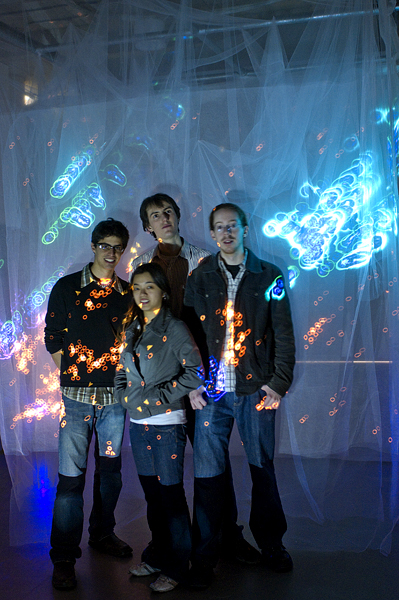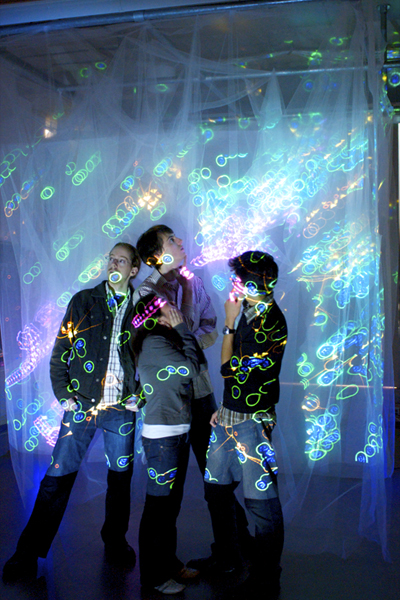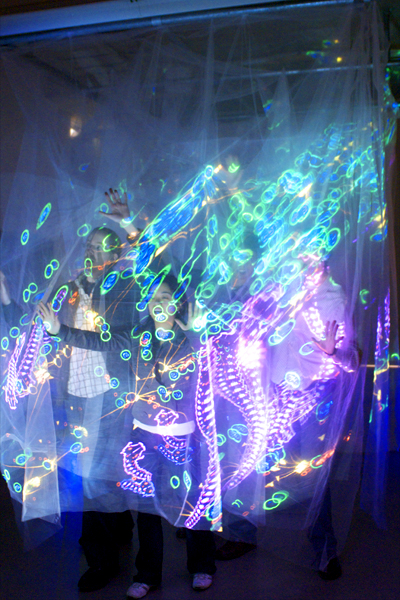


















GAIA is inspired by complex systems, formed of simple interrelated components that generate chaotic results. To create such a system we embraced a ground-up approach to every angle of development: engineer the smallest atomic particles of the system and then watch as their interactions form system-wide patterns. This approach can be seen in the individual behaviours of each creature such as herbivores multiplying into sweeping herds or scavengers swarming together when feeding on carrion. The aural component of the work also benefits from this approach as the soundscape is formed out of the individual noises that creatures make. Visual and sound elements combine to form discernible states in a constantly mutating system, more dynamic than anything we could have conceived of from a system-wide approach.
Fabric became fundamental to the visual aesthetic and immersive quality of the piece. More than a simple a barrier between physical and virtual spheres, hanging veils became surrounding membranes that warped and multiplied the visual effects. Visitors entering the space literally became enveloped by the system in an intimate, tactile, and even claustrophobic experience.
Interaction is another key facet of GAIA. To achieve sensing in a dark environment with hanging fabrics, we used infrared lights created with RGB gels to highlight figures within the space. Human activity is detected by a video camera in nightshot mode and fed into the system at a defined frame-rate. A constantly changing random subset of creatures is made “vulnerable” to human interference. When human activity is detected these creatures exhibit behaviours different from their usual conduct, e.g. herbivores reproducing independently of food consumption.



James Lovelock’s Gaia hypothesis proposes that Earth (biosphere, atmosphere, cryosphere, hydrosphere and lithosphere) exists as one living organism. The physical, natural and human components of earth sharing in an inexorably linked system. In our project the natural entities have been replaced with digital sprites but the concept remains the same. Upon entering the installation you become part of a system, your actions affecting the behaviour of artificial life-forms which in turn causes you to react to them. Human participants join digital sprites as actors within a system that merges human and virtual into one living organism.
GAIA is an immersive environment that simulates life through projected light, fabric, sound, and interaction. Visuals representing a living system are projected through an arrangement of layered veils while a distinctive soundscape reinforces its events. The system is composed of digital creatures, which exist in a food chain that links their populations. Visitors entering the space affect the behaviour of the creatures becoming themselves entwined in the fabric of the system. The interdependent nature of the piece causes human interference to ripple through the system, destabilizing its normal behaviour.
- TEAM MEMBERS:
- Henk Boom
- Karen Lee
- Nicolas Munoz
- Peter Rockwell
- MATERIALS:
- Semi-transparent fabric
- Projector
- Video Camera
- Lights with RBG gels
- Speakers



































